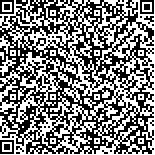Archive > Volume 38 Issue 11 > 2012,38(11):1417-1422. DOI:10.7519/j.issn.1000-0526.2012.11.011 Prev Next
Path Analysis on Negative Air Ion Concentration and the Meteorological Environment in Urban and Forest Zones
- Article
- Figures
- Metrics
- Preview PDF
- Reference
- Related
- Cited by
- Materials
Abstract:
There are many uncertainties in the relationship between meteorological environment and the negative air ion (NAI) concentration. Previous research has confirmed that the NAI concentration changes with time and environment. Based on the observation data of NAI concentration in one year in Suqian City, this study investigated the distributions of NAI concentration in urban and forest zones and explored the roles played by the meteorological factors in the NAI concentration. The results show that the NAI concentration in forest zone is higher than that in the urban zone, particularly in seasons summer and autumn. The results also indicate that the total cloud amount, the average wind speed and the percentage of sunshine are not significantly correlated with urban and forest NAI concentrations. With the aid of a path analysis method, it is found that in the meteorological factors, which may influence the NAI concentration, the vapour pressure is either the superior direct factor or the greatly indirect factor, and the air temperature is the secondary factor, which has important direct effect on NAI concentration in forest and city sections. Because the remaining path coefficient of meteorological elements on NAI concentration in urban and forest areas is more than 0.8, this suggests that meteorological factors present less influence on the NAI concentration in this study, the authors suggest that in the environment there are still some other important factors that have direct effect on NAI concentration.
Keywords:
Project Supported:
Clc Number:


Mobile website









